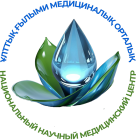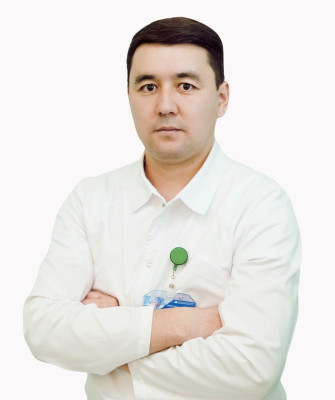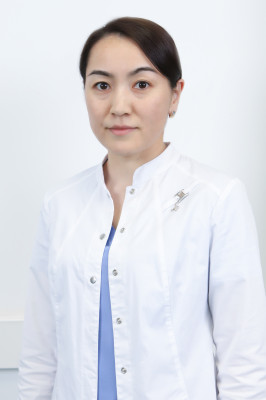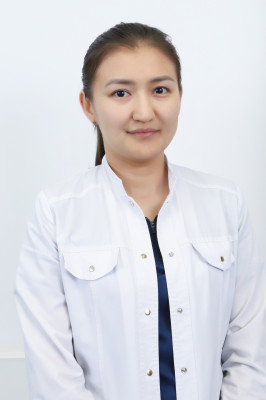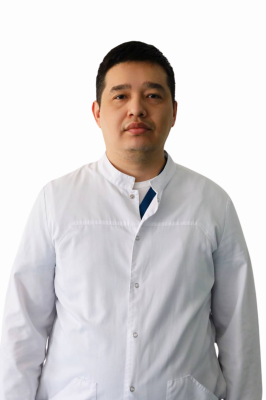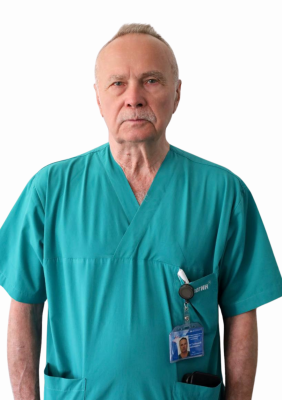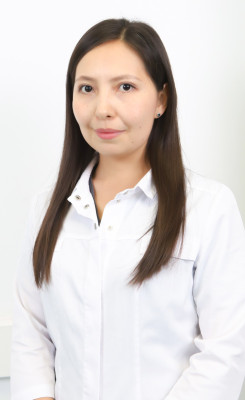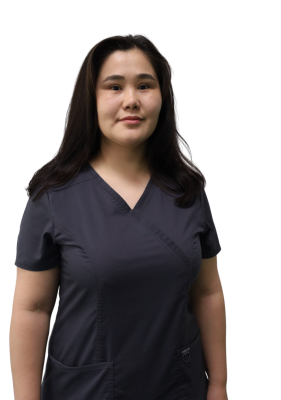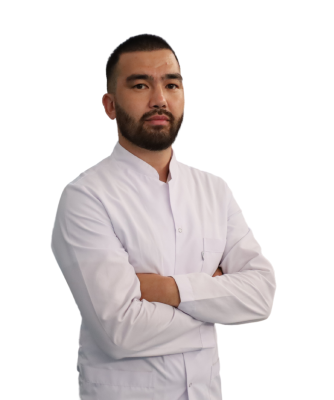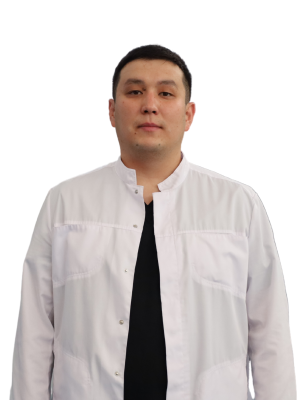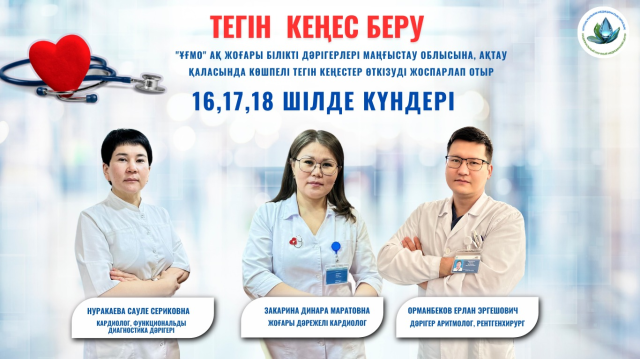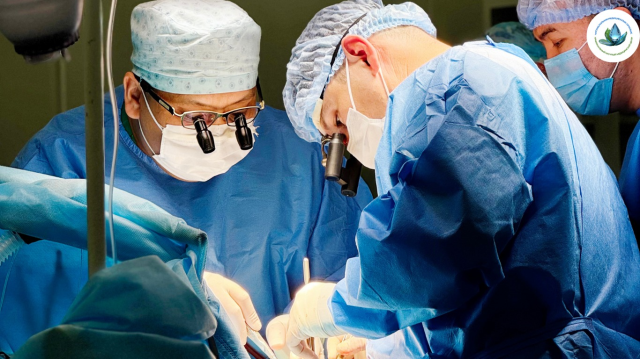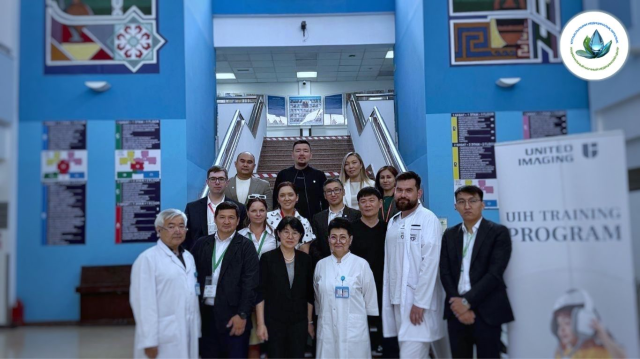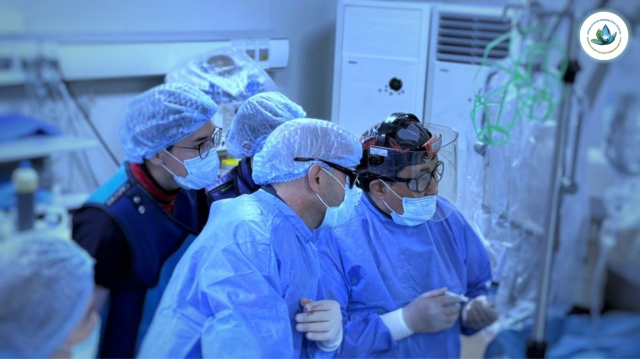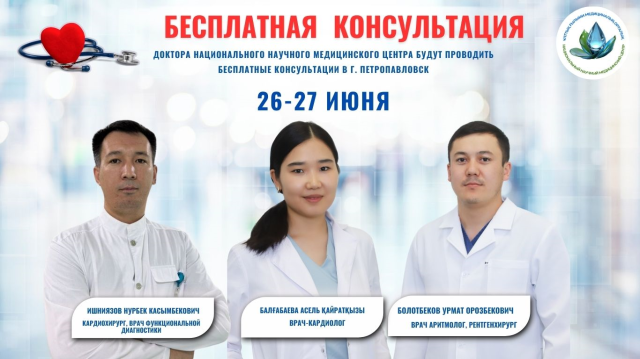Department of Anesthesiology, Intensive Care and Intensive Care of Cardiology and Cardiac Surgery No. 2
The department consists of two floors:
1. Department of Cardiology and Cardiac Surgery Department No. 2 – 2nd (second) floor. The main task of the department is to provide high-tech inpatient medical services: anesthesiological aids, intensive care and intensive care for patients hospitalized in the cardiac surgery department, as well as specialized medical services according to approved clinical protocols.
2. On the second floor, the department is deployed for 8 (eight) beds. Surgical treatment of patients is carried out in the conditions of the department "Operational cardiac surgery unit".
The Department of Anesthesiology conducts all types of anesthetic aids:
1.endotracheal anesthesia, using the latest inhalation anesthetics, 2.total intravenous anesthesia;
3.intravenous anesthesia;
4.all types of conduction and regional anesthesia;
5. carrying out anesthetic aids in conditions of artificial blood circulation.
Equipment: The department is equipped with functional beds, bedside ventilators – Drager. Savina, monitors for monitoring organ function (hemodynamics, respiration, temperature, blood oxygen saturation), bedside tables, centralized distribution of compressed gases, oxygen, vacuum system at each bed, devices for metered infusion of medicines (perfusers, infusomats), anti-bedsore mattresses, centralized air conditioning.
In accordance with the main tasks of the department, its staff:
1. Determines the most optimal method of anesthesia, carries out medical preoperative preparation, anesthesia during operations.
2. Carries out round-the-clock monitoring of the condition of patients in the postoperative period until the stabilization of the functions of vital organs.
3. Assesses the risks of the perioperative period, conducts early preventive measures to prevent them.
4. Conducts intensive therapy for patients in the postoperative period and resuscitation measures in other departments, as indicated.
5. Provides a comfortable work atmosphere, compliance with corporate ethics, respectful attitude to the patient and his relatives
6. It is guided by the latest international standards of diagnosis and treatment of the patient
7. The operating room uses modern anesthesia and respiratory equipment from Draeger, Primus models, modern models of multi-channel monitoring from Nihon Kohden, monitoring invasive and non-invasive blood pressure, pulse oximetry, capnography, thermometry, three standard ECG leads, intra-aortic balloon contrapulsation, autohemotransfusion therapy using the Cell device Saver", modern dosing systems of perfusers and infusamates from the company "B.Braun"
8. Patients are in intensive care after heart surgery – coronary artery bypass grafting (on pump, off pump), correction of congenital and acquired heart defects, as well as after surgery on the main vessels, including operations on all parts of the aorta, carotid arteries. There are also patients on the ECMO machine with severe cardiovascular and respiratory insufficiency.
9. The intensive care unit is equipped with modern functional "Hill — Rom" beds, equipped with modern DRAEGER breathing equipment of the "SABINA" model. Continuous monitoring of the main parameters of the body's vital activity is carried out. With the help of the central modern monitoring station of the Nihon Kohden company, there is a full range of dosing equipment from the B.Braun company.
Department of the Department of Cardiology and Cardiac Surgery No. 2 – 1st (first) floor. The main task of the department on the ground floor is the treatment and supervision of severe patients transferred from cardiology departments (Interventional Cardiology No. 1, Interventional Cardiology No. 2, Arrhythmology) according to the severity of the condition, with diagnoses:
- Acute coronary syndrome – emergency coronary angiography (CAG), balloon angioplasty and coronary artery stenting;
- cardiomyopathy of various origins (ischemic cardiomyopathy, dilated cardiomyopathy, restrictive cardiomyopathy, hypertrophic cardiomyopathy), with the development of acute and subacute decompensation of chronic heart failure.
- severe arrhythmias (ventricular tachycardia unstable and stable, recurrent, pirouette-type, ventricular fibrillation, atrial fibrillation/flutter with ventricular tachysystole, atrial arrhythmias with hemodynamic instability).
- in case of cardiac impulse conduction disorders with a high risk of sudden cardiac death (sinatrial block 2, 3rd degree, sinus arrest, atrioventricular block 2st Mobitz 2, atrioventricular block with 2:1, 3:1, 4:1, complete atrioventricular block with complete atrioventricular dissociation).
- refractory heart failure in need of mechanical circulatory support (peripheral extracorporeal membrane oxygenation, intra-aortic balloon counterpulsation).
- Intermediate and high-risk pulmonary embolism.
- Acute disorders of cerebral circulation (hemorrhagic and ischemic genesis).
- Respiratory insufficiency of various origins (severe pneumonia, pneumothorax, hemothorax, hydrothorax, chronic obstructive pulmonary disease, bronchial asthma in the acute stage) in need of respiratory support – oxygen therapy, mechanical respiratory support - connection of non-invasive artificial lung ventilation (NIVL) and artificial lung ventilation (ventilator).
- Monitoring of patients in cardiology departments after 17:00h., as well as providing cardiologist advice in all departments of the center.
- Monitoring the condition of patients in the Department of Therapy and Cell Technology during autologous stem cell transplantation (TSC). Emergency care in the development of anaphylactic reaction up to life-threatening conditions (bronchobstructive syndrome, bronchospasm, respiratory failure, apnea, life-threatening cardiac arrhythmias, pulmonary hypertensive crisis in systemic diseases with the development of bronchospasm).
- Cardiac resuscitation and anesthesiological care in 3 X-ray surgeries (No. 1, No. 2, No. 3 X-ray surgeries) during coronary interventions, arrhythmological operations for patients with a cardiological profile, providing endotracheal anesthesia to severe patients during stenting of coronary arethria with connection of mechanical circulatory support (peripheral extracorporeal membrane oxygenation, intraaortic balloon counterpulsation), during implantation stent graft, arrhythmological patients, if necessary, with the connection of artificial ventilation with total anesthesia.
On the ground floor, the department is deployed with 8 beds to provide medical services to patients with a cardiological profile, as well as a therapeutic profile during the task. Surgical treatment of patients is carried out in the conditions of the catheterization laboratory department, X-ray operating rooms, blood bank.
The CardioBIT is equipped with bedside ventilators (Savina), monitors for monitoring organ function (hemodynamics, respiration, temperature, blood oxygen saturation), bedside tables, centralized distribution of compressed gases, oxygen, a vacuum system at each bed, devices for metered infusion of medicines (perfusors, infusomats), anti-bedsore mattresses.
The department employs:
The head of the department is 1 unit.
Resident doctors – 17 weeks.
Senior nurse – 1st year.
Nurses – 24ed.
The sister-mistress is 1 year old.
Orderlies – 11ed.
Register of services provided in the department – 1st (ground) floor for 2023
Consultation of a cardiologist, cardioreanimatologist, anesthesiologist in cardiology and other departments of the center according to indications, at the request of the attending physicians of the specialized department. | |
Provision of telemedicine advice and participation in consultations. | |
Provision of anesthetic aid (intravenous, regional, spinal, epidural, total general, endotracheal anesthesia). | |
Admission and intensive therapy of patients with coronary heart disease (ACS with and without ST segment elevation, unstable angina pectoris of medium and high risk). | |
Admission and intensive therapy of patients with cardiomyopathies (KMP, DKMP, GKMP, RKMP) complicated with acute decompensation of CHF (LVH, OLZHN). | |
Admission and intensive therapy of patients with PE with intermediate and high risk. | |
Admission and intensive therapy of patients with hemodynamically significant cardiac rhythm and conduction disorders (VT, FJ, LVT, AF/TP, PT, AVURT, AVRT (antidromic, orthodromic), AV blockades of 2 and 3 degrees, CA blockades of 2 and 3 degrees, sinus arrest). | |
Admission and intensive therapy of patients with the development of ONMC. | |
Objective examination of the patient (palpation, percussion, auscultation, local status). | |
Interpretation of the results of laboratory and instrumental studies. | |
Decoding of the ECG (electrocardiography). | |
The design of the sheet of laboratory and instrumental examinations. | |
Conducting medical appointments under the Damu Med program and monitoring their performance. | |
Carrying out the calculated dosage (by age and body weight) of medicines. | |
Emergency measures for syndromes of acute cardiovascular, respiratory failure, and critical conditions of cardiological origin. | |
Installation of a temporary EX (pacemaker). | |
Installation of a VABC (intra-aortic balloon counterpulsor). | |
Performing CPR. | |
Conducting electrical pulse therapy. | |
Placement of a central venous catheter (single-light, double-light, three-light catheter) by different approaches (jugular, subclavian, femoral). | |
Installation of a dialysis catheter. | |
Installation of an arterial catheter (SLAVE). | |
Control of invasive blood pressure. | |
Intubation of the trachea with the transfer of breathing to a ventilator. | |
Noninvasive and invasive ventilation of the lungs in different modes according to the severity of the disease. | |
In case of restrictive lung diseases (ARDS, SNOT), conducting a recruitment maneuver (the concept of opening the lungs). | |
Weaning off the ventilator. | |
Extubation of the endotracheal tube. | |
Antibacterial therapy to determine sensitivity. | |
Relief of emergency allergic reactions. | |
Intensive therapy for anaphylactic shock. | |
Determination of indications for peritoneal dialysis, hemosorption, plasmapheresis, and other detoxification methods. | |
Vibrating chest massage. | |
Determination of blood type and rhesus affiliation according to the AB0 system. | |
Diagnosis and treatment of disorders of the coagulation and anticoagulation systems of the blood (DIC syndrome). | |
Determination of indications for hemotransfusion (er.mass, er.suspensions, washed erythrocytes, platelet mass, FFP, cryoprecipitate, albumin). | |
To recognize on the basis of clinical and laboratory data violations of water-electrolyte metabolism and acid-base state, to correct their violations. | |
Calculations of water deficiency, electrolytes, disorders of protein and carbohydrate metabolism, CSF, hemoglobin and hematocrit and correction of these disorders. | |
Correction of hypovolemia and hypervolemia. | |
Determination of indications for infusion therapy with calculation of the crystalloid-colloidal ratio. | |
Advanced hardware monitoring of patient parameters: iAd = NAD, CVD, ECG, rhythm, heart rate, saturation, BH, BIS monitoring. | |
Installation of an intravenous peripheral catheter. | |
ECG removal. | |
Catheterization of the bladder, measurement of diuresis. | |
Preparation of patients for coronary angiography, stenting of coronary vessels, arrhythmological operations (installation of CVD, CT-D, EX), cardiac surgery. | |
Rehabilitation of TBD. | |
Central catheter bandage. | |
Blood sampling from a vein. | |
Blood sampling from a finger (with an automatic scarifier). | |
Blood sampling from the artery. | |
Sputum sampling for bacteriological examination | |
Urine sampling for bacteriological examination | |
Collection of pleural fluid for bacteriological examination | |
Sampling of material for bacteriological examination of an infected wound. | |
Postoperative follow–up in the OARIT No. 2 - 1st floor (for active drains, pressure dressings). | |
Measurement of body temperature. | |
Measurement of CVD. |
